Scalp hair loss is a common problem for both men and women, and many treatments are available today. But which is the best hair regrowth serum? And what are the benefits of using it? In this blog, we'll answer these questions, as well as discuss the differences between Procapil and Minoxidil. We'll also discuss the benefits of using either of these treatments for hair growth and give tips on finding the best hair growth serum for your needs. So read on to learn more about hair loss and hair regrowth treatments!
Procapil vs. Minoxidil for hair regrowth
|
Criteria |
Procapil |
Minoxidil |
|
Benefits |
Acts as a DHT blocker. Promotes microcirculation in scalp for healthy hair growth and reduced hair thinning. |
Lengthens anagen phase to slow down hair fall, and nourishes hair follicles to promote healthy hair cycle |
|
Side effects |
No side effects from topical application |
Scalp itching, dryness, scaling, flaking, irritation, or burning |
|
Product types |
Procapil shampoo, procapil hair serum / hair growth serum, procapil-enriched minoxidil |
Minoxidil topical solutioin, minoxidil foam, minoxidil lotion |
When it comes to hair regrowth, there are two topical treatments that dermatologists generally recommend: Procapil and Minoxidil. While Procapil is found in products such as hair serum, hair growth tonic, shampoo, Minoxidil comes in two forms, i.e., foam and solution.
Both ingredients have been clinically proven to help increase hair growth in people with thinning hair or baldness. Dermatologists recommend using Procapil before switching to Minoxidil if it doesn't seem to be working. However, both drugs are FDA-approved and safe for use, so it's up to you to decide which is best.
How to use Procapil for hair growth
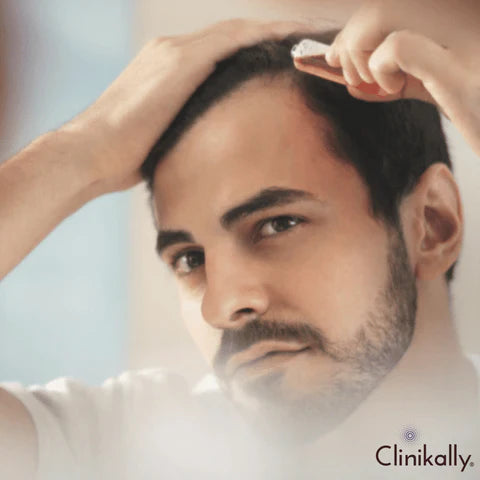
Procapil is a topical solution and oral drug that has been proven to be very effective in hair growth. Dermatologists suggest using it as a topical solution for hair growth, as this provides the best results. It can also be taken orally, if required.
How to use Minoxidil for hair growth
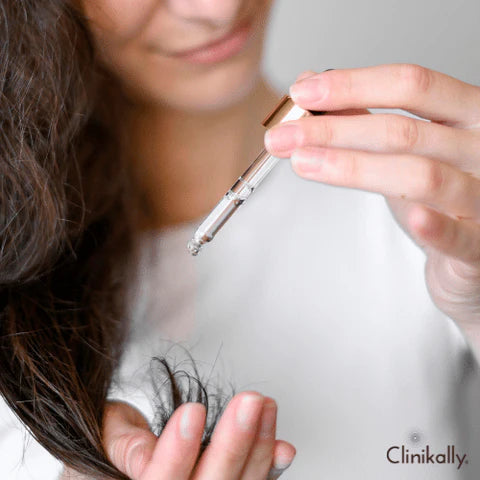
Topical minoxidil is also known as Rogaine or Regaine. While it doesn't provide long-term relief from hair loss, minoxidil does offer temporary relief from thinning hair and patches of baldness. It's important to note that minoxidil should only be used in consultation with a dermatologist, as side effects may include skin irritation or allergic reactions. If you're looking for an effective treatment for hair growth, then minoxidil is your solution!
Benefits of Procapil
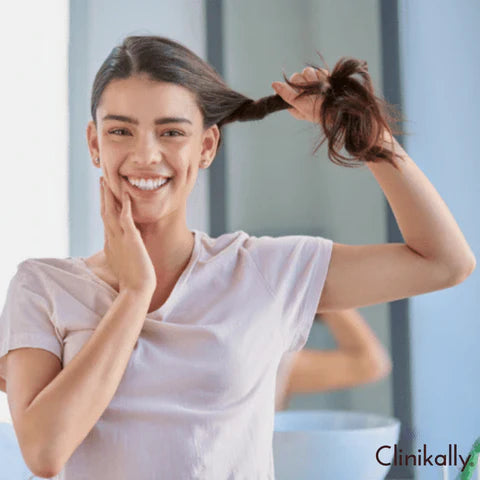
Hair loss is a common problem that affects many people. One of the most popular scalp treatments is Procapil. Dermatologists often recommend Procapil as the first step in treating hair loss problems. Procapil helps to increase hair growth by blocking DHT, which is thought to be responsible for balding and thinning hair. Procapil can also help restore elasticity and thickness to hair follicles, leading to the regrowth of lost hair.
Additionally, Procapil is a top-of-the-line scalp treatment that has many benefits for people with hair loss. These include: restoring hair loss, hair growth, scalp irritation, scalp dryness, scalp itchiness, scalp redness, scalp swelling, and scalp fatigue. So, whether you're experiencing thinning hair or balding, Procapil could be an effective solution.
Understanding the Mechanism of Procapil
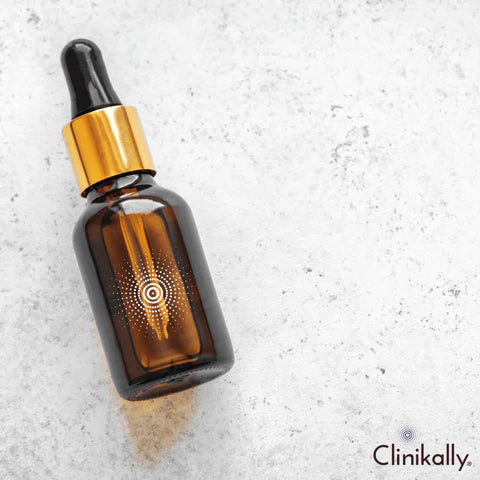
Procapil is a patented hair care ingredient developed by Sederma, a company that specialises in the development of active ingredients for the cosmetics industry. It is commonly found in hair care products, particularly those intended to prevent hair loss and promote hair growth. Several activities that focus on various facets of hair health comprise Procapil's mechanism of action:
-
Fights Follicle Aging: Procapil includes bioactive substances that help to keep hair follicles young. Hair follicles can decrease with age, resulting in hair loss or thinning. The components of Procapil serve to maintain and fortify these follicles, potentially preventing hair loss caused by ageing.
-
Improves Microcirculation: Procapil improves blood circulation in the scalp as one of its activities. This is advantageous because improved circulation means higher nutrient supply to hair follicles. Improved microcirculation can aid in the nourishment of the follicles, resulting in healthier hair development.
-
Blocks DHT: Dihydrotestosterone (DHT) is a hormone that has been associated with hair loss, especially in people who have a hereditary predisposition to androgenetic alopecia (pattern baldness). Procapil may function by blocking the 5-alpha-reductase enzyme, which transforms testosterone into DHT. It may help prevent hair follicle miniaturisation and eventual hair loss by lowering DHT levels.
-
Strengthens Hair: Procapil is also thought to thicken the hair shaft, making it more resistant to breakage. This activity benefits overall hair health and can aid in the reduction of hair loss due to breaking.
While Procapil has shown promise in some trials and is utilised in a variety of hair care products, individual outcomes may vary. Genetics, hormonal fluctuations, nutritional deficiencies, stress, and other factors can all contribute to hair loss. Procapil-containing products may benefit some people by encouraging healthy hair development and minimising hair loss, but they may not be a one-size-fits-all solution for all forms of hair loss. Always seek personalised advice and recommendations from a healthcare professional or a dermatologist regarding hair care products and treatments, especially if you have specific concerns about hair loss or scalp health.
Clinical Studies on Procapil's Efficacy
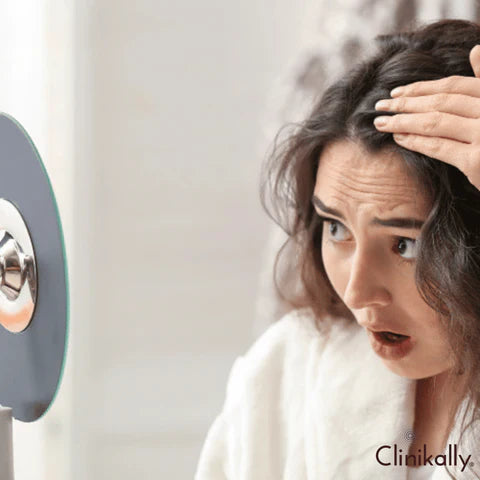
Several studies have been conducted to assess the effectiveness of Procapil in enhancing hair health and preventing hair loss. Some of these trials showed promising results, but it's important to remember that individual reactions to therapies can differ. Here are a few examples of Procapil studies:
-
Study on Procapil for Hair Growth: Research published in the Journal of Applied Cosmetology looked at the effectiveness of Procapil in men and women with androgenetic alopecia. The study found that after a set length of use, participants' hair growth and thickness improved when compared to a placebo group.
-
Anti-Hair Loss Effect: Another study looked at Procapil's ability to prevent hair loss in men. Over a specified treatment time, the study found a reduction in hair loss and an increase in hair density when compared to a control group.
-
Impact on Dermal Papilla Cells: Research conducted in vitro has suggested that Procapil could have a favourable impact on dermal papilla cells, which are essential for the health of hair follicles and the control of hair growth. These findings imply that Procapil may stimulate cellular processes that facilitate hair growth.
While these and other studies suggest that Procapil may be effective in encouraging hair growth and minimising hair loss, it's important to remember that individual responses can differ due to factors such as the cause of hair loss, genetics, overall health, and adherence to therapy. Furthermore, scientific research into hair loss and hair growth treatments is continuous, and newer studies or clinical trials may have been completed since then, providing additional insights into Procapil's effectiveness.
Side effects of Procapil

Derived from plant-based ingredients like olive leaves, Procapil is highly effective in treating hair loss without side effects, harsh chemicals or smell. Cosmetically this product is used in hair strengthening and anti-hair loss treatments such as lotions, conditioners, and serums without any demonstrated side effects.
Benefits of Minoxidil
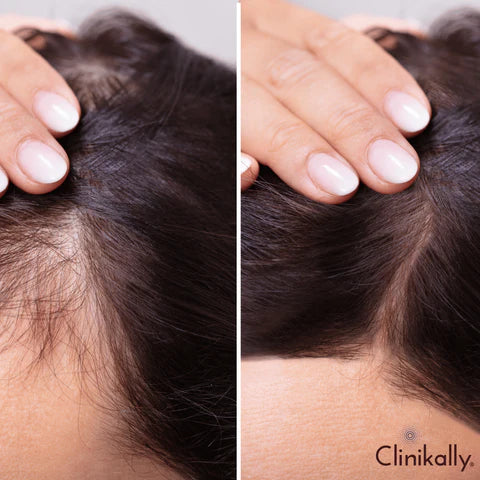
Dermatologists are always looking for new hair-growth treatments, and minoxidil is one of the most popular options. Not only is minoxidil effective in increasing hair growth, but it also has a few side effects. These side effects are usually mild and may include skin irritation, redness, or flaking. However, these side effects typically disappear after a few weeks of use.
In addition, Minoxidil is a top hair-growth treatment because it helps to reduce the thickness of balding areas. Dermatologists generally recommend minoxidil if other treatments have not successfully increased hair growth. Finally, minoxidil can also encourage regrowth in thinning hair, giving you more confidence and volume.
The Long-term Impact of Minoxidil
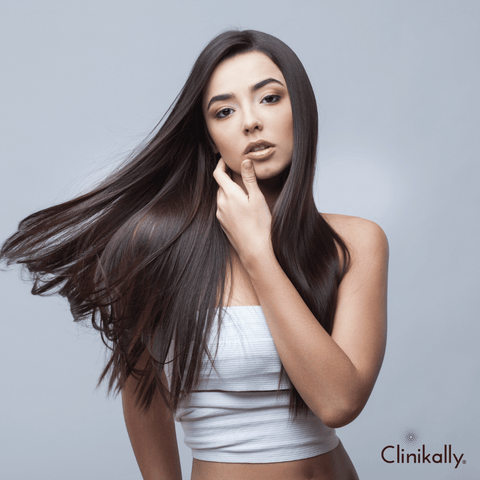
Minoxidil is a vasodilator medicine that is most commonly used to cure hair loss. Both over-the-counter and prescription-strength formulations are available for men and women with pattern hair loss (androgenetic alopecia). Here's an outline of minoxidil's long-term effects:
-
Hair Regrowth and Maintenance: Minoxidil has been demonstrated to be helpful in encouraging hair regrowth and preventing additional hair loss in many people. It stimulates hair follicles, resulting in thicker, longer, and more pigmented hair. However, its effectiveness varies from person to person, and not everyone responds to the treatment identically.
-
Continued Use for Maintenance: Continued and regular application is required to sustain the advantages of minoxidil. When minoxidil is stopped, the new hair growth promoted by it may regress and hair loss may return within a few months to a year.
-
Side Effects: While topical use is generally regarded safe, some individuals may have side effects such as scalp irritation, dryness, itching, or redness. Individuals may also encounter unwanted hair growth in unanticipated regions in rare situations. These adverse effects are usually minimal and reversible once the medicine is stopped.
-
Long-Term Safety: Minoxidil has been on the market for a number of decades, and most people agree that it has a good long-term safety profile. It is best to use the medication under a healthcare provider's supervision, though, as individual responses may differ.
-
Dependency on Continuous Use: Although minoxidil does not treat or cure baldness, it does help manage it. It is critical to realise that the effects of the medication are temporary and that continued use is necessary to sustain its advantages.
-
Combination Therapy: To get better and more durable results, some people may benefit from combining minoxidil with other hair loss treatments, such as finasteride (for men), or procedures like hair transplants.
-
Genetic Factors: Both hereditary and personal factors may have an impact on minoxidil's efficacy. Users may have different response rates because hair loss can have a variety of causes and progressions.
Having routine check-ups with a healthcare professional can help track improvements and handle any side effects that may arise from long-term minoxidil use. Individual experiences with minoxidil can differ, so it is crucial to remember that before beginning or altering any hair loss treatment regimen, speaking with a healthcare provider is advised.
Comparing 2% and 5% Minoxidil Formulas

The concentration of the active ingredient, minoxidil, is the main factor separating the 2% and 5% minoxidil formulations. This is how the two are contrasted:
-
Minoxidil Concentration: The amount of minoxidil present in the solution is the main factor separating the 2% and 5% minoxidil formulations. The concentration of the active ingredient in a 5% minoxidil solution is higher than in a 2% solution.
-
Efficacy: Research indicates that minoxidil at a concentration of 5% is generally more effective than a concentration of 2% at stimulating hair growth and preventing hair loss. However, the higher concentration may also carry an increased risk of side effects, such as scalp irritation or dryness, for some individuals.
-
Safety Profile: Both 2% and 5% minoxidil solutions are typically regarded as safe for topical use. The higher concentration (5%), on the other hand, may have a higher risk of side effects due to its stronger composition. If any adverse reactions occur, it is critical to follow the appropriate usage instructions and see a healthcare expert.
-
Applicability: Individuals who have not achieved adequate results with the 2% solution or who have more advanced hair loss are frequently advised to use the 5% solution. Individuals who are more sensitive to drugs or who want to start with a lower concentration to measure tolerance may benefit from the 2% formulation.
-
Frequency of Application: Both concentrations are typically given directly to the scalp twice daily. However, depending on the brand and formulation, the particular usage directions may differ. It is critical to follow the product's instructions or the advice of your healthcare provider regarding application frequency and quantity.
Individual considerations such as the severity of hair loss, skin sensitivity, and previous responses to treatments must all be considered when deciding between 2% and 5% minoxidil formulations. Some people may prefer the greater concentration for better outcomes, while others may choose the lower dose for a decreased risk of adverse effects. It is best to seek the advice of a healthcare practitioner or dermatologist who can provide personalised advice and prescribe the best minoxidil concentration depending on individual needs and concerns. Regular check-ups with a healthcare provider can also assist evaluate progress and manage any potential negative effects of minoxidil treatment.
Side effects of Minoxidil

Minoxidil is a drug used to treat hair loss. Although it has few side effects, some people experience skin irritation after using the medication. Dermatologists recommend Minoxidil for various reasons - it is effective and has few side effects. Always read the package leaflet carefully before taking any medication for the first time to avoid any mishaps!
How to effectively reduce your hair fall
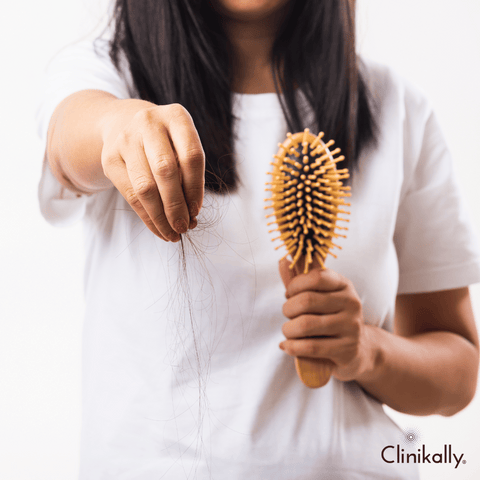
While following an effective hair care routine helps, you can also use dermatologist-recommended hair care products to promote new and healthy hair growth. These include shampoos, conditioners, and even hair masks for hair growth and scalp nourishment. For better and expert advice, you can also book an online dermatologist appointment to get treatment plans personalised for your hair and scalp.
Dermatologists also recommend using supplements for hair growth. These supplements provide safe and effective nourishment to your hair and scalp - thus helping to reduce hair fall and prevent hair loss.
Nutritional Considerations for Hair Strength

Nutrition is important in maintaining overall hair health and strength. A variety of nutrients are required for healthy hair development and strength. Here are some important dietary considerations:
-
Protein: Keratin, or specifically protein, makes up the majority of hair. Hair growth and strength are supported when sufficient amounts of protein are consumed from foods like lean meats, fish, eggs, dairy products, legumes, nuts, and seeds.
-
Vitamins: Sebum is an oily substance that lubricates the scalp; vitamin A aids in its production. Sweet potatoes, carrots, spinach, and kale are some examples of sources. Collagen is necessary for the structure of hair, and vitamin C helps produce it. Citrus fruits, strawberries, bell peppers, and broccoli all contain this compound. Vitamin E is an antioxidant that can help with scalp health. Good sources include nuts, seeds, spinach, and avocados. Vitamin D is important for hair follicle cycling. Sunlight, fortified foods, fatty fish, and egg yolks are all sources.
-
Minerals: Iron deficiency can result in hair loss. Red meat, poultry, fish, lentils, and leafy green vegetables are all good sources. Zinc aids in the growth and repair of hair tissue. Oysters, beef, lentils, seeds, and nuts are zinc-rich foods. Selenium is an antioxidant that aids in hormone processing and hair growth. Brazil nuts, fish, and whole grains contain selenium. Biotin is a B-vitamin complex that is necessary for hair growth. It's found in eggs, nuts, seeds, and some vegetables.
-
Omega-3 Fatty Acids: Omega-3 fatty acids are found in fatty fish such as salmon, mackerel, and sardines, as well as flaxseeds, chia seeds, and walnuts. Omega-3 fatty acids promote scalp health and hair density.
-
Hydration: Keeping hydrated is essential for healthy hair. Drinking plenty of water keeps hair strands hydrated and keeps them from becoming brittle.
-
A Well-Balanced Diet: A well-balanced diet that includes a variety of fruits and vegetables, lean proteins, whole grains, and healthy fats ensures that you get a variety of nutrients necessary for hair strength.
While a balanced diet is crucial for healthy hair, it is also critical to maintain excellent general health practises. Individual responses to dietary modifications can also vary. If you have concerns about your hair's health or are having serious hair difficulties, you should seek the advice of a healthcare expert or a certified dietitian who can provide personalised advice based on your unique needs.
Stress Management Techniques for Hair Preservation

Hair health and preservation might benefit from stress management. Excessive stress can cause hair problems, including hair loss or thinning. While stress management cannot completely prevent hair loss, it can help to lessen its effects. Here are some stress-reduction practises that may help with hair health:
-
Regular Physical Activity: Regular physical activity can help to reduce stress. Endorphins, which are known to improve mood and reduce stress, are released during exercise. On most days of the week, aim for at least 30 minutes of moderate exercise.
-
Mindfulness and Meditation: Mindfulness meditation, deep breathing exercises, and yoga are all practises that can help reduce stress and promote relaxation. These techniques can help lower cortisol levels, which can rise as a result of stress and contribute to hair problems.
-
Healthy Sleep Habits: Make good sleep hygiene a priority by aiming for 7-9 hours of quality sleep per night. Sleep deprivation can contribute to increased stress levels, affecting overall health and possibly affecting hair health.
-
Balanced Diet: Eating a nutritious and balanced diet benefits overall health, including hair health. Ensure your diet includes a variety of vitamins, minerals, proteins, and healthy fats. Avoid excessive consumption of processed foods and sugars.
-
Activities for Stress Reduction: Participate in activities that you find relaxing and enjoyable. Reading, listening to music, spending time in nature, or pursuing a hobby can all help reduce stress and promote well-being.
-
Time Management: Organising your time and setting realistic goals can help reduce stress caused by feeling overwhelmed. Prioritise tasks and learn to delegate when necessary.
-
Seeking Help: Speaking with friends, family, or a professional counsellor or therapist can provide emotional support and aid in stress management. Sometimes talking about your worries can help you relax and gain perspective.
-
Limiting Stressors: Identify and try to reduce stressors in your life. This could include setting boundaries, saying no to excessive commitments, or managing difficult relationships.
While stress management can be good for overall health, it may not totally prevent hair loss or resolve underlying hair-related disorders. If you have major hair problems, you should contact a dermatologist or a healthcare practitioner who specialises in hair health to discuss particular treatment choices or interventions that are customised to your condition.
Find your ideal hair growth serum!
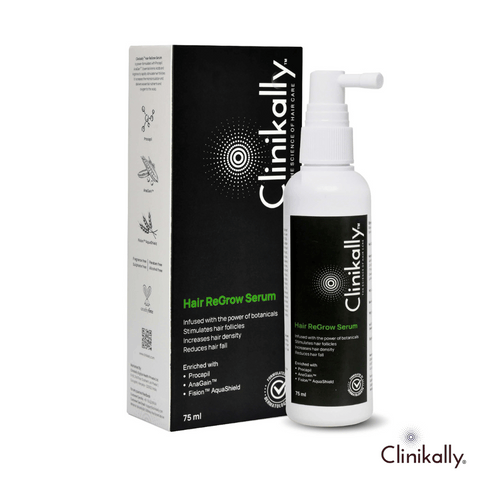
We can recommend the following criteria and factors to consider when looking for the best hair growth serum:
-
Ingredients: Look for serums that contain clinically proven hair-growth ingredients such as minoxidil, biotin, caffeine, saw palmetto, keratin, vitamins (such as Biotin, Vitamin E, and Vitamin D), and natural extracts (such as ginseng or rosemary oil).
-
Effectiveness: Examine the product's effectiveness using reviews, clinical studies, or customer testimonials. Look for evidence to back up claims of hair growth and hair loss reduction.
-
Safety Profile: Look for any allergies or possible side effects linked to the ingredients in the serum. Some people might experience scalp irritation, redness, or itching with certain products. Make sure your type of scalp can safely use the serum.
-
Application and Usage: Think about how simple it is to incorporate into your daily routine and apply. Some serums must be applied daily, while others may have different instructions. Choose one that is compatible with your way of life.
-
Brand Reputation and Certification: Choose serums from respectable companies that have a track record of manufacturing high-quality hair care items. Seek for products that have been approved by the appropriate health authorities or tested by dermatologists.
-
Price and Value: To assess a product's value, compare its prices and sizes. Some serums may be more expensive, but they provide larger quantities or better formulations.
-
Personal Preferences: Consider your scent preferences as well as any additional features you might want, such as whether the serum is fragrance-free or has added conditioning properties.
-
Patience and consistency: Recognise that results may take time. To see noticeable improvements in hair growth and thickness, it is often necessary to use the product consistently for several months.
Because of individual differences in physiology and the underlying causes of hair loss, what works well for one person may not necessarily work well for another. It is best to speak with a dermatologist or other healthcare professional to get personalised advice tailored to your specific hair concerns and needs.
Ingredients to Look for in a Hair Growth Serum

Look for ingredients that have been shown to be effective in promoting hair growth and improving overall hair health when selecting a hair growth serum. Here are a few key ingredients to think about:
-
Minoxidil: This is one of the most well-known and clinically confirmed hair growth agents. It comes in a variety of concentrations (including 2% and 5%) and is frequently seen in topical solutions or serums.
-
Biotin (Vitamin B7): Biotin is a B vitamin that aids in the formation of keratin, a protein found in hair. It can help strengthen and prevent hair damage. It's widely used in hair growth products.
-
Caffeine: Caffeine may stimulate hair development by activating hair follicles and lengthening the hair growth phase, according to research. Caffeine topical application is common in hair serums.
-
Keratin: Because hair is mostly keratin, using keratin-infused serums can help strengthen hair, prevent damage, and improve overall hair health.
-
Saw Palmetto: This natural extract is thought to inhibit the enzyme 5-alpha-reductase, which converts testosterone to dihydrotestosterone (DHT). High DHT levels are linked to hair loss in people with androgenetic alopecia.
-
Peptides: Certain peptides have been shown to improve hair follicle health and stimulate hair growth. Copper peptides, for example, are thought to increase the size and function of hair follicles.
-
Niacinamide (Vitamin B3): Niacinamide improves blood circulation to the scalp, which promotes nutrient delivery to the hair follicles and may support hair growth.
-
Vitamins and antioxidants: Ingredients such as Vitamin E, Vitamin C, Vitamin D, and antioxidants such as green tea extract or rosemary extract promote scalp health and may aid in hair growth.
-
Essential oils: Natural oils such as rosemary oil, peppermint oil, castor oil, and argan oil are thought to have properties that stimulate hair growth, improve circulation, and condition the scalp.
-
Plant Extracts: For their ability to support hair health and growth, herbs and plant extracts such as ginseng, aloe vera, and pumpkin seed extract are sometimes included in hair growth serums.
Always be wary of possible allergies or sensitivities to specific ingredients. Before attempting a new hair growth serum, especially if you have underlying scalp conditions or are allergic to specific substances, seek personalised advice from a dermatologist or healthcare professional.
Custom Hair Serum Formulations

Creating a custom hair serum formulation can be a time-consuming process that involves selecting specific ingredients based on their beneficial properties for hair health and growth. Here's a step-by-step guide to creating your own hair serum:
-
Identify Hair Concerns: Determine the primary issues you want the serum to address. Hair loss, thinning, breakage, scalp health, and overall hair nourishment are all possibilities.
-
Select Active Ingredients: Consider including minoxidil in the formulation if you want to promote hair growth and fight hair loss. Look for essential oils like rosemary, peppermint, lavender, or tea tree oil that are known to strengthen and encourage hair growth. Include vitamins that are known to support the health of hair, such as biotin, niacinamide, Vitamin E, and panthenol (provitamin B5). Certain extracts, like saw palmetto, ginseng, or pumpkin seed extract, may support healthy scalps and hair development.
-
Base and Carrier Oils: Select carrier oils that can be used as the serum's base. Jojoba oil, argan oil, coconut oil, or grapeseed oil can all provide nourishment while also acting as a carrier for other active ingredients.
-
Humectants and emollients: Use humectants such as glycerin or aloe vera to attract and retain moisture, as well as emollients such as shea butter or cocoa butter to condition and soften the hair.
-
Preservatives and stabilisers: If the serum contains water or water-based ingredients, consider using natural or commercial preservatives (such as vitamin E) to prevent bacterial growth and extend shelf life. Stabilisers may also be required to maintain the consistency of the formulation.
-
Formulation and mixing: Measure and combine the ingredients in the correct proportions. Ascertain the components' compatibility and solubility. To maintain stability and efficacy, it is critical to adhere to a recipe or formulation guide.
-
Testing and Patch Testing: Perform a patch test prior to full-scale use to check for allergic reactions or skin sensitivity. Additionally, conduct tests on a small portion of your hair to ensure compatibility and assess the serum's effectiveness.
-
Packaging and Storage: Store the serum in an airtight, opaque container to protect it from light and air exposure. Proper storage helps maintain the serum's potency and efficacy.
Before designing a personalised hair serum, it's critical to research and understand the properties of each ingredient, their recommended concentrations, and potential interactions. When creating personalised skincare or haircare products, consult a cosmetic chemist, dermatologist, or formulation expert for help and safety.















